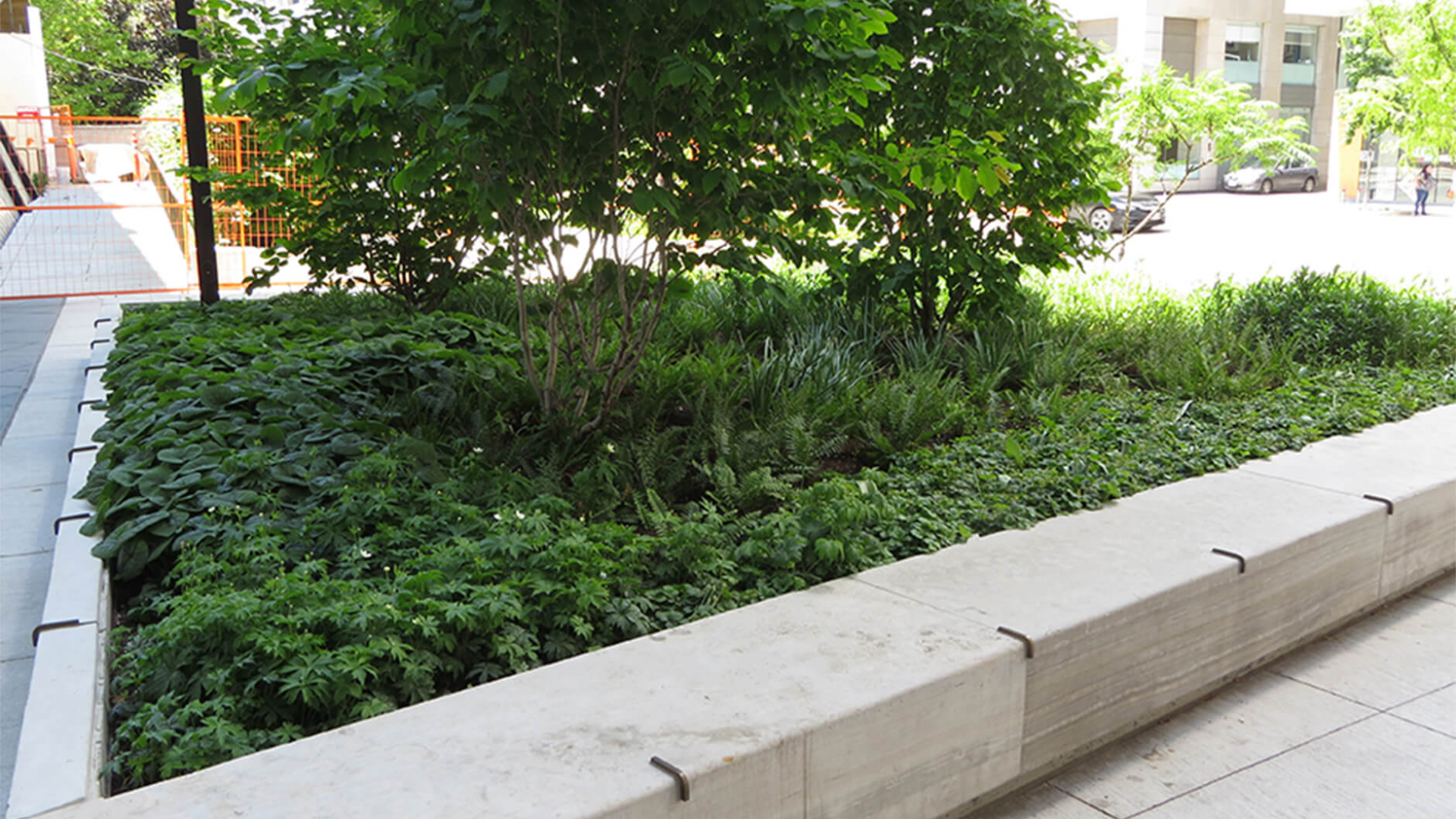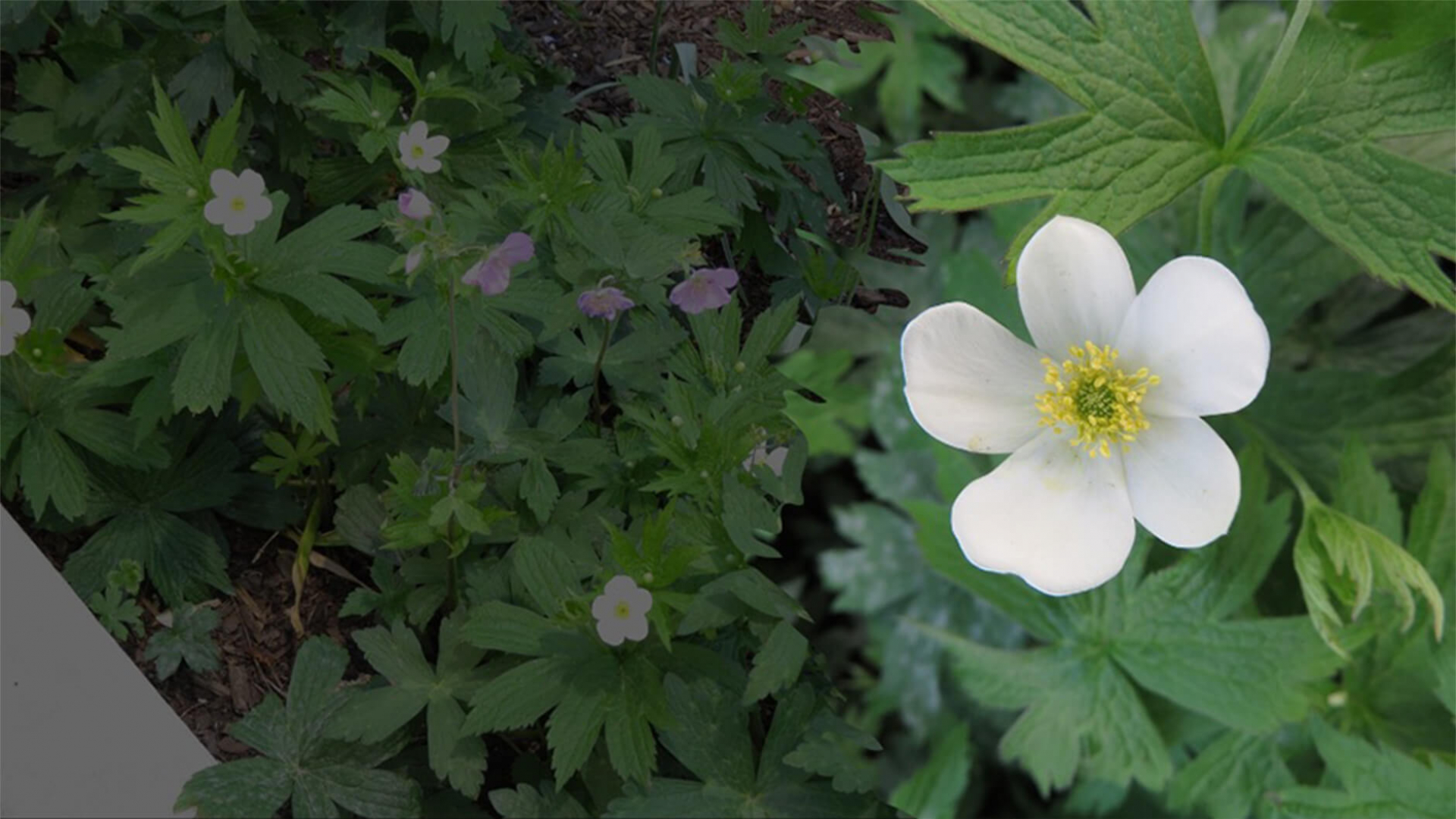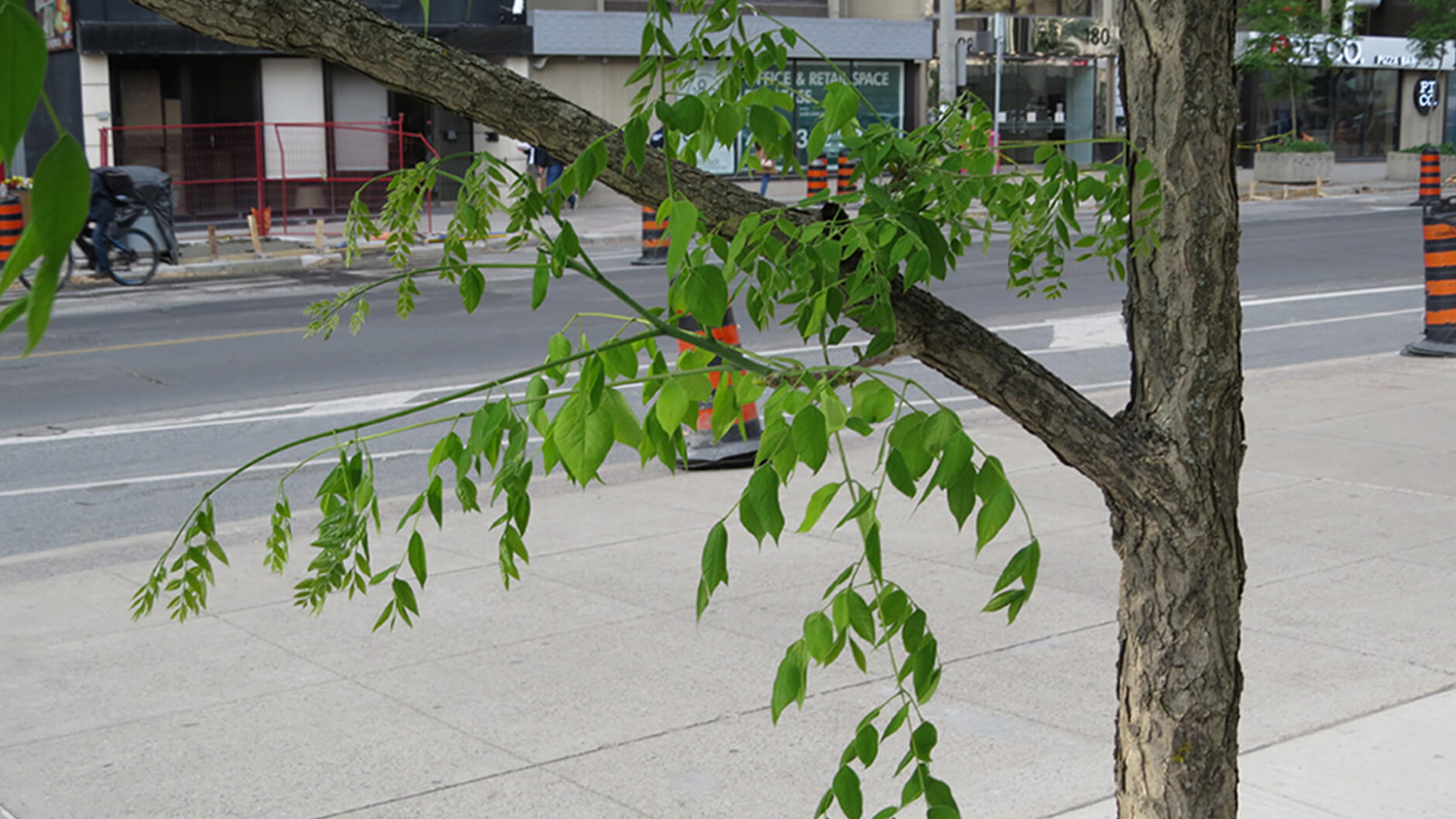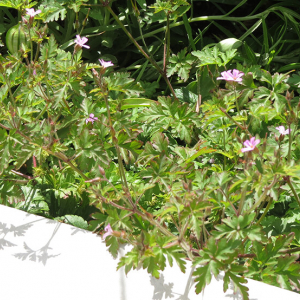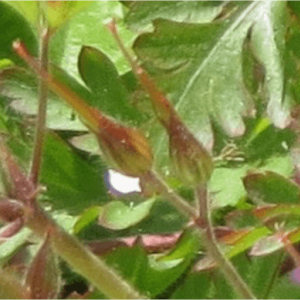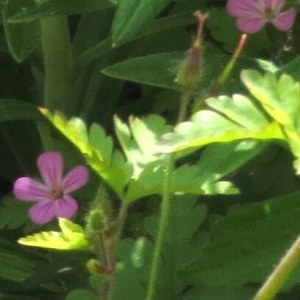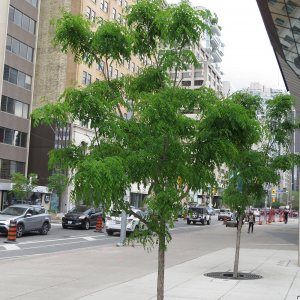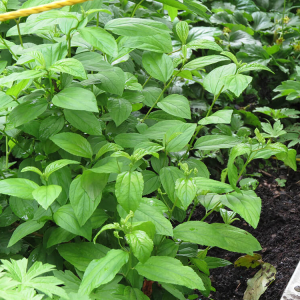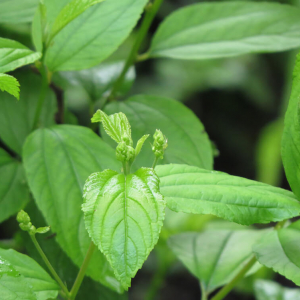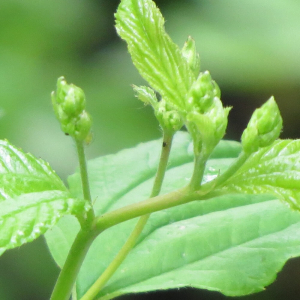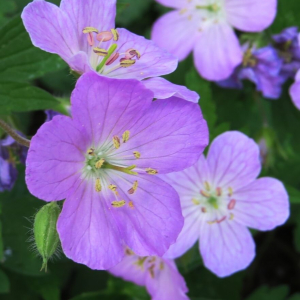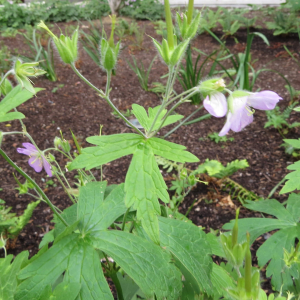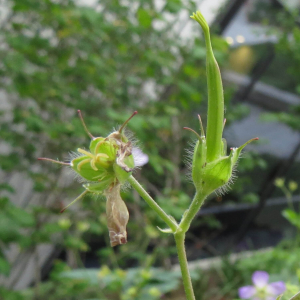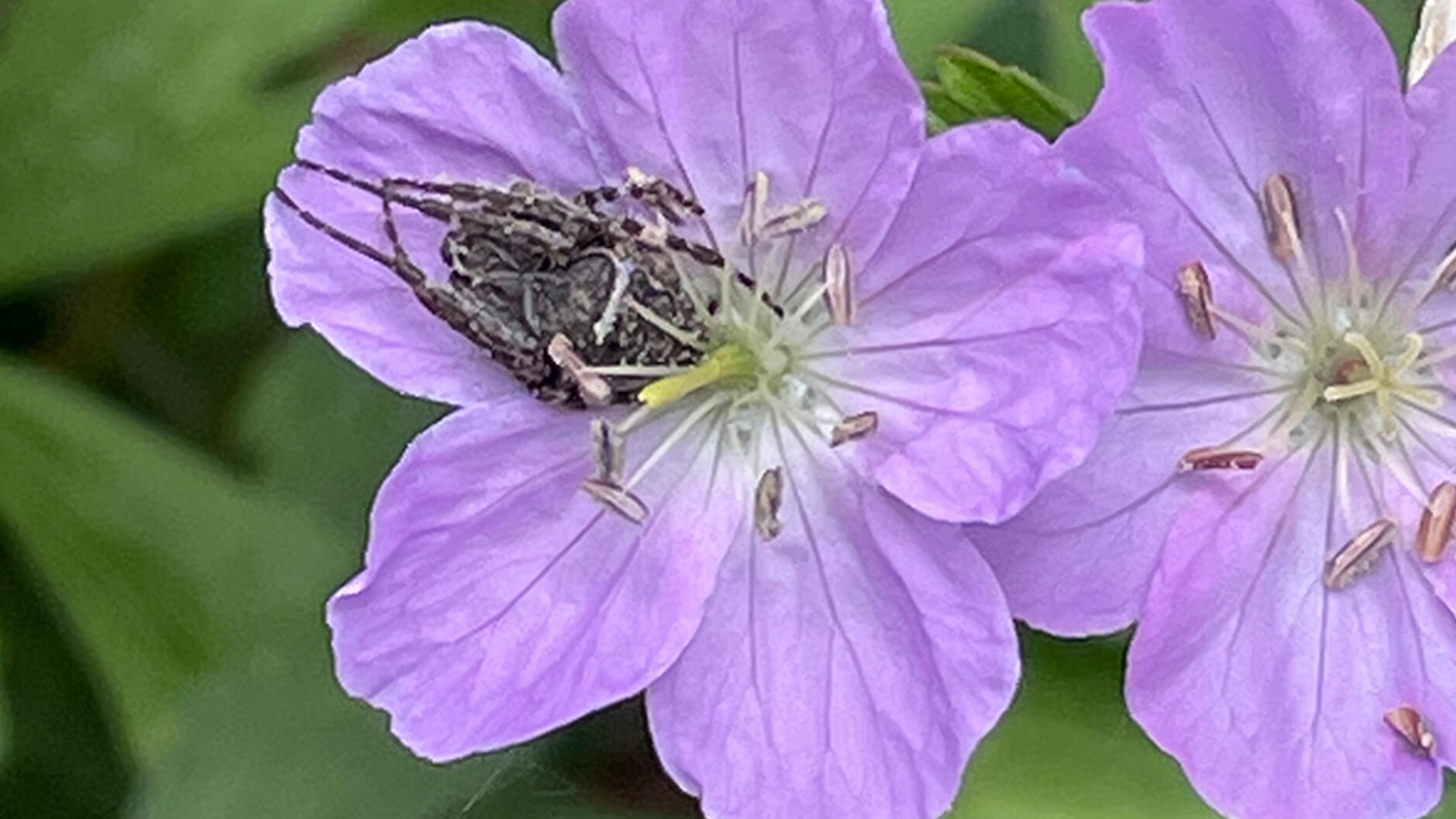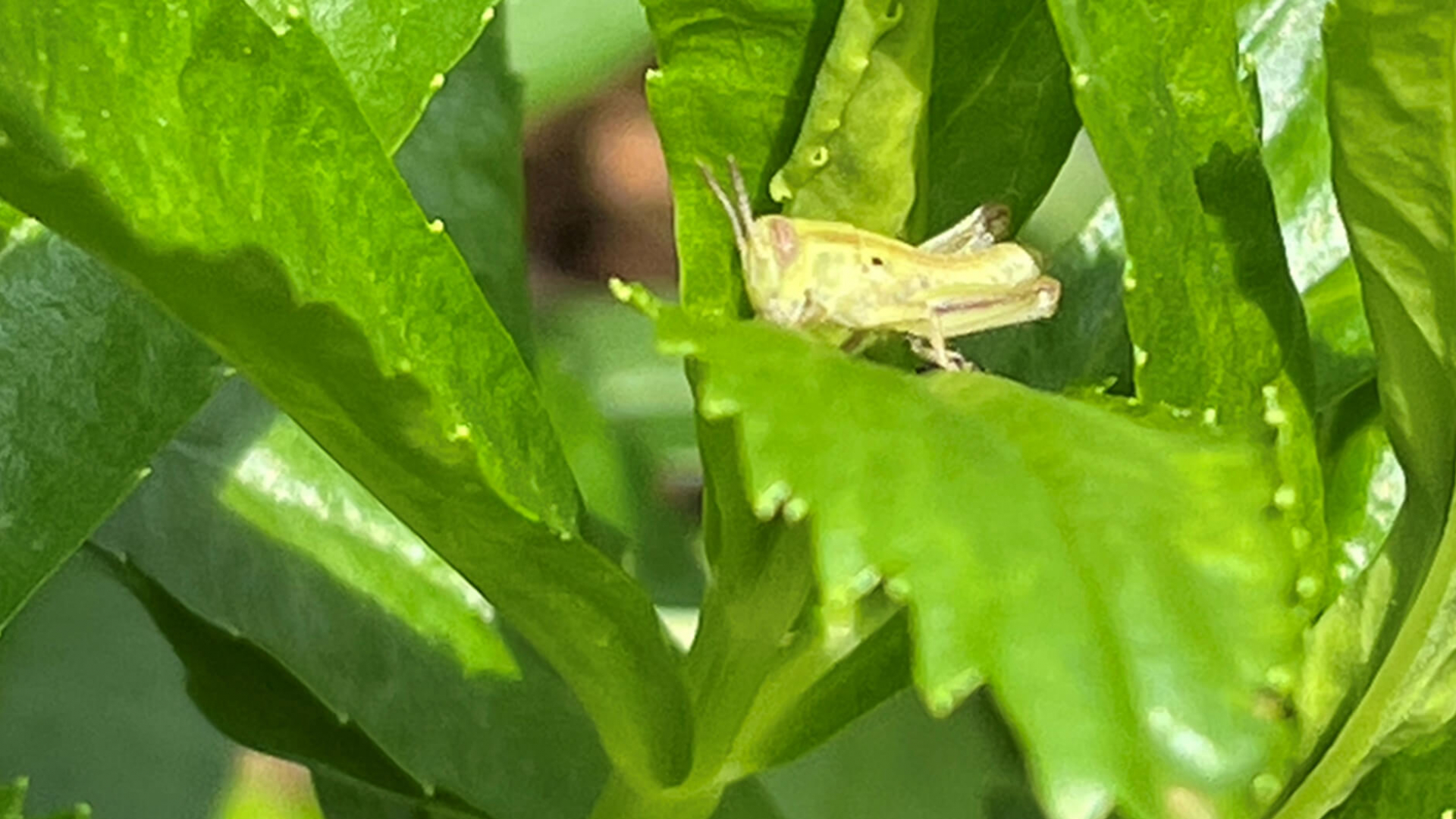Journaling the latest wave of colour on the plaza
The ROM gardens are lush and plants have filled in nicely in the past two weeks. The leaves on the witch hazel (Hamamelis virginiana) are fully expanded and providing shade.
Canada anemone (Anemone canadensis) has joined the succession of flowers in the Plaza beds, with its brilliant white flowers. Although its palmately lobed leaves can sometimes be confused with wild geranium leaves, its flowers are totally different: five white petal-like sepals and a whorl of bright yellow stamens surround the pistil.
Thursday, May 27
The shoots of the massive doubly compound leaves of the Kentucky coffee tree (Gymnocladus dioicus) that we last saw emerging from the buds are elongating and the leaves are expanding.
Tuesday, June 1
No matter how well planned and tended a garden is, there are always some freeloaders. This clump of Herb-Robert (Geranium robertianum) has snuck into an available crevice of soil at the edge of the garden bed.
1) Herb-Robert. 2) Developing fruit of Herb-Robert with persistent style. 3) The flowers and developing fruits of Herb-Robert. Photographs by Kevin Seymour.
Herb-Robert, native to Europe, is related to the wild geranium (Geranium maculatum) that was planted and has been blooming for a couple of weeks. Herb-Robert’s candy pink flowers with pink stripes are typical, 5-petaled geranium flowers with long styles that persist after the petals drop, and as the fruit develops.
However, the plants’ gangly nature belies the fact that it can spread quite aggressively. Not to worry though as the gardeners from Dr. Landscape who tend the garden weekly will weed it out on their next visit.
Thursday, June 3
The Kentucky coffee trees on Bloor Street are now sporting drooping clusters of compound leaves, so big that they are reminiscent of mini palm trees. As the leaves continue to expand, they will start to offer the beautiful, filtered light and shade that they are prized for.
New Jersey tea (Ceanothus americanus) is a low native shrub that grows in dry habitats and at the edges of woods across Southern Ontario. Its flowers are enjoyed by pollinators and nectar-feeders, and it is a host plant for the Summer Azure butterfly (Celastrina neglecta).
1) A clump of New Jersey tea. 2) Pattern of veins and teeth on the expanding leaves of the New Jersey tea plant. 2) Detail of emerging leaves and flower buds on the New Jersey tea plant. Photographs by Kevin Seymour.
At this time of year, it is always interesting to watch the buds open and the leaves and flowers emerge. The leaves of this shrub are diagnostic, with veins that branch off the midvein and curve towards the tip. The edge of the leaf is finely toothed. The flower buds are just expanding from inside the emerging leaves.
In the last post, I promised to keep track of the long green style in the middle of the wild geranium (Geranium maculatum) flowers.
The wild geraniums in the garden are beginning to drop their petals and many are developing fruits. The green style is now the narrow projection at the end of the lengthening green ovary. The ovary will become the fruit.
1) Detail of a wild geranium flower with a bud visible below it. 2) Wild geraniums beginning to drop their petals. 3) Detail of the narrow developing fruit. Photographs by Kevin Seymour.
The long narrow fruit of geraniums has been compared to the bill of a crane so members of the genus are often called crane’s bills. The hairy leaf-like structures at the base of the developing fruit are the sepals that once formed the flower bud (a bud is visible beneath the open flower). Their spiny tips are prominent in the fruit pictures.
We know that the insects have been hanging around the garden for quite a while, but in the wind and the rain of the past few weeks they have been elusive. This week we found success as some insects and spiders rested long enough for us to take their pictures.
The spider resting on this wild geranium flower is Larinioides sclopetarius or the gray cross spider, a relatively large orb weaver. This common city dweller likes bright lights that can attract insects to its web at night. During the day it finds a warm place to hunker down and soak up the sun.
The young two-striped grasshopper (Melanoplus bivittatus) tucked in between the obedient plant (Physostegia virginiana) leaves, overwintered as an egg. Two-striped grasshoppers feed on many different herbaceous flowering plants and are sometimes pests in agricultural environments. It is unlikely that a couple of grasshoppers will have much impact on the large ROM garden.

